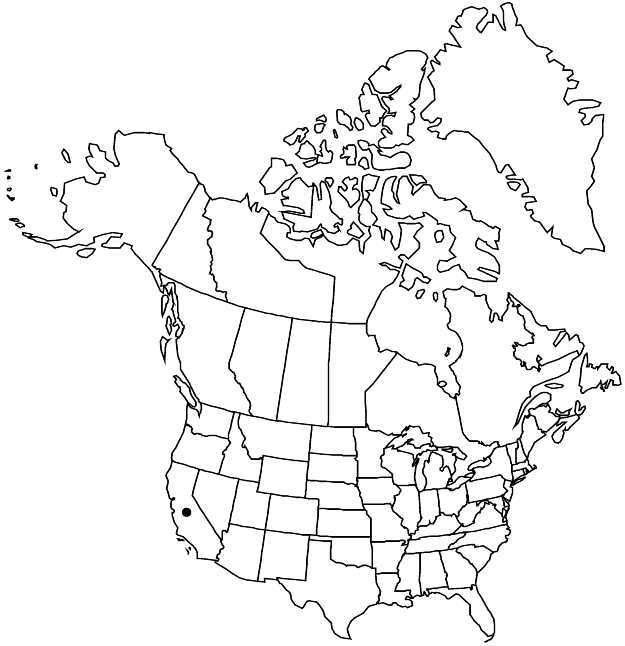Eriogonum tripodum
Pittonia 1: 39. 1887.
Subshrubs, spreading, 2.5–5 × 3–6 dm, glabrate. Stems: caudex spreading to somewhat erect; aerial flowering stems erect, slender, solid, not fistulose, arising at nodes of caudex branches and at distal nodes of short, nonflowering aerial branches, 2–3 dm, glabrate. Leaves in compact basal rosettes; petiole 0.2–0.4 cm, tomentose; blade narrowly oblanceolate, 1.5–2(–2.5) × 0.5–1 cm, densely white-tomentose on both surfaces, margins entire, plane. Inflorescences umbellate, 0.4–1 × 0.4–1 cm; branches glabrate; bracts 4–8, leaflike, occasionally midway along branch, lanceolate, 0.5–1.5 × 0.3–0.7 cm. Involucres 1 per node, campanulate, 3–4 × 3–4.5 mm, tomentose; teeth 6–10, lobelike, spreading, 1–1.5 mm. Flowers 4–5 mm, including 1–1.5 mm stipelike base; perianth bright yellow, villous abaxially; tepals monomorphic, obovate; stamens included to slightly exserted, 3–4 mm; filaments pilose proximally. Achenes light brown, 2.5–3 mm, glabrous except for sparsely pubescent beak.
Phenology: Flowering May–Jul.
Habitat: Serpentine flats, slopes, and outcrops, mixed grassland communities, oak and conifer woodlands
Elevation: (100-)300-800(-1500) m
Discussion
Eriogonum tripodum occurs in widely scattered locations on the inner coast ranges (Colusa, Lake, and Tehama counties) and along the western foothills of the Sierra Nevada (Amador, El Dorado, Mariposa, Placer, and Tuolumne counties). These subshrubs would make an impressive addition to the garden.
Selected References
None.
